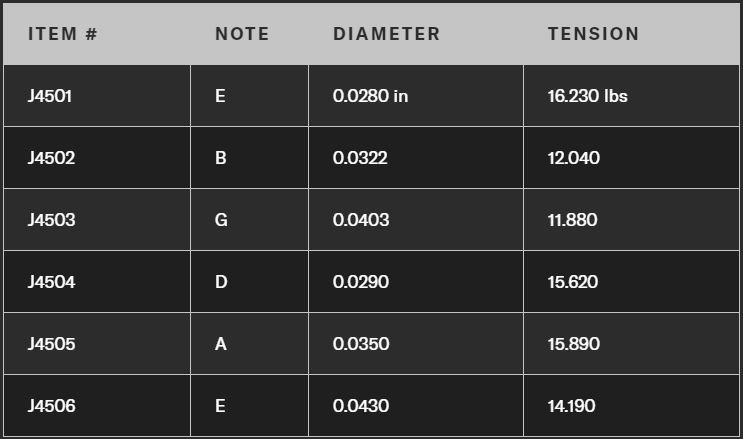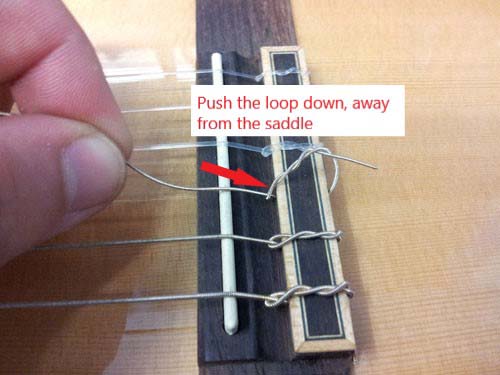There are four main contributors to the D-string breakages that plague many classical (nylon string) guitar players.
- String construction
- Restring technique
- Guitar construction
- Playing style
String Construction
String construction is arguably the largest contributor to the D-string breakage problem. As a general rule, wound strings are not as strong as unwound strings of the same thickness. The D-string is the thinnest of the wound strings (bass strings), not much thicker than the high-e! This means that the core of the D-string is really thin and prone to breakage. Some forums have stated that the D-string is also under the highest tension of the wound strings, but this is not true in all cases, as you can see in the table below showing the tension of D'Addario EJ45 strings.

Restring Technique
The way you fasten your strings at the bridge of the guitar can also play a role in how frequently your D-string will break. When making the "timber hitch" style knot at the bridge, it usually helps to ensure the loop (between the bridge and saddle) is as far away from the saddle as possible. The loop can put some pressure on the string between the bridge and saddle, and can be an unwanted point of friction unless it is pushed down to the point where there is minimal movement.

Guitar Construction
The guitar you're using could also contribute to string breakages. If there are any sharp points or burrs on the tuning posts, nut or saddle, these have the potential to damage your strings. You'll know where the problem area is if your string keeps breaking at the same spot every time. If the nut slot is cut too wide, this could also allow extra movement in the string, leading to unwanted friction and breakages. Keep the nut lubricated with graphite or something like "Big Bends Nut Sauce" to reduce the friction in the nut. If the problem is at the bridge-end, some people even suggest putting a bit of rubber (like you'd find after stripping a wire) around the string where the loop wraps around the string if the problem is severe.
Playing Style
If you're heavy-handed with your strumming or picking technique, this will lead to quicker wear of your strings. Some classical guitar players also find that the melodies they play have a tendency to focus on the D-string, which would age this string faster than the others. Apart from changing your technique, you could just try changing your strings more frequently (i.e. before they get dull and break). You might even want to change your strings while they're still reasonably good, and then keep the old strings as a spare set for future breakages. This way, your strings will be pre-stretched when you put them on and will settle in quicker (which is great if you need to change strings in the middle of a performance). Most guitar players will change strings quite frequently, and it is a normal and recommended part of guitar maintenance.